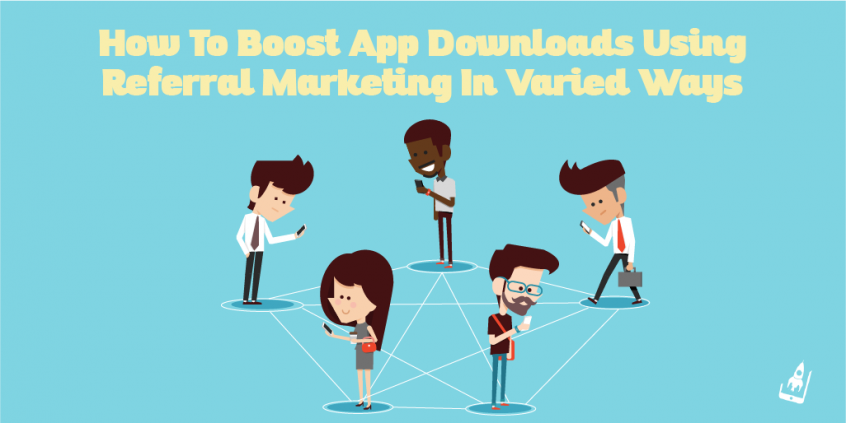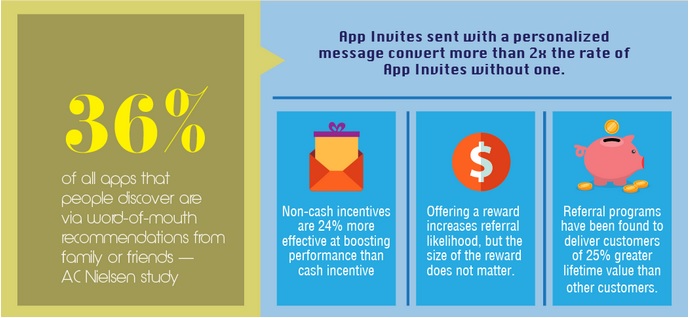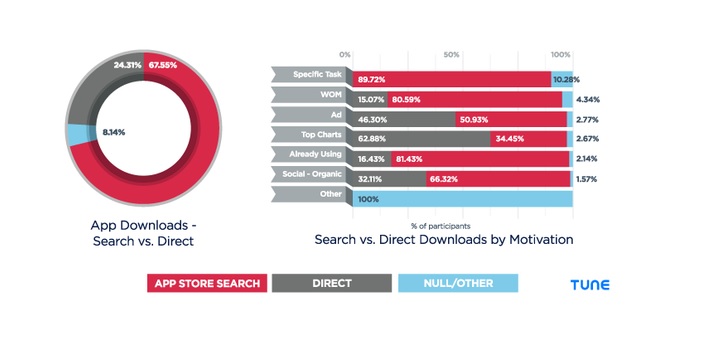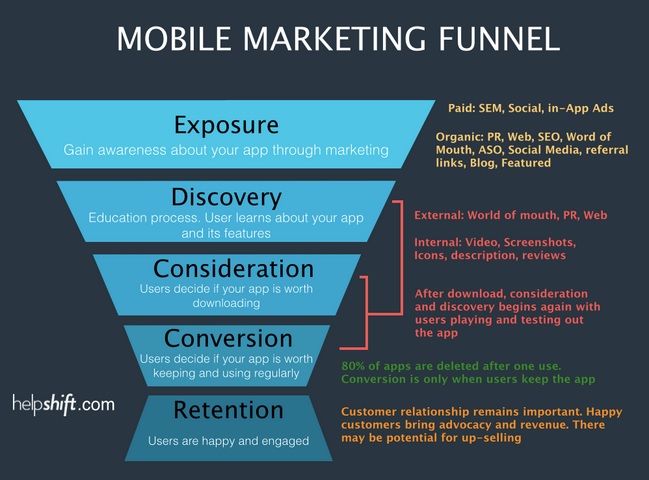There isn’t a doubt that it remains the ultimate goal for many.
Installing an app (whether paid or unpaid) may seem like a trivial task in the hands of the user. However, that’s not the case. For a user, it evokes a psychology that is similar to making a purchase. And hence, a user gives it a lot of thought at a mental level, without even realizing it.
How did a user decide to install a specific app? What factors influenced them before they made this decision? These are a few questions that are never digged deep. By ignoring this aspect they not only continue to hit in the dark, they also miss evaluating valuable nuggets of information that may improve their marketing strategy.
But here’s a breather if you fall in the category above. We’ve identified the best marketing tactic to boost app downloads, and here’s some proof:
In most successful cases, referral marketing acted like a catalyst, both at an external and internal level. This ensured faster app installation for these brands.
In this article, we aim at educating app developers on how referral marketing can be put to its optimum use, throughout a user’s decision-making funnel.
In the second half of the article, we’ll explore the KPI’s that matter while implementing an app referral program.
Understanding The Mobile Marketing Funnel
To be able to benefit from referral marketing, app developers need a thorough understanding of how it influences a user’s decision and impacts app installs. The simplest way of doing this by analyzing a user’s journey across the mobile marketing funnel.
Just like any purchase funnel, an app user also moves through various stages of a user journey, before he/she decides to install an app. This that can be split into the following stages:
Stage 1- Exposure
Exposure is the first step of the funnel. At this stage a user is exposed to the app through various marketing routes such as social media, in-app ads, web, word-of-mouth, blog, features, etc. While awareness may or may not guarantee an app download, it increases the chances of a user to at least ‘try’ it.
Role of Referral Marketing At Stage 1
Referral marketing is an organic way of making your users aware of your app and cuts through quickly when it comes to app downloads. Most informed users rely on word of mouth and over 84% of purchase decision are made keeping referrals in mind.
Stage 2- Discovery
This happens to be the second step on the user’s journey.Even after quality exposure, app users take a while before installing the app. This usually happens because they continue to discover its features and are continually comparing and researching about it.
I’ll explain this with an example. A while ago, I had a lackluster experience while making a purchase through an app and I ended up deleting it. Since I was looking for a similar app (with better features), I waited and dabbled with a few before finally installing a new one. This new app was the one that was suggested to me by my peers.
Just like me, your other users are no different. It takes both external and internal tactics to keep them motivated and push them to consider your app.
Role of Referral Marketing At Stage 2
According to a research, word-of-mouth remains to be the most popular means of app discovery as well.
What’s interesting is the fact that over 80.59% percent of users try the new app if it is recommended by friends or family. It also means that even though they value referrals, the prolonged emphasis on this tactic can make them ‘consider’ an app rather swiftly.
Stage 3- Consideration
This stage is the most critical considering that the users decide whether your app is worth downloading or not. They usually move back and forth between the ‘discovery’ and ‘consideration’ phase as they are always evaluating the app.
Role of Referral Marketing At Stage 3
You’ve already seen how word-of-mouth can influence a user’s decision-making process at stage 1 and stage 2. These stages used referral marketing as a publicity and educational tool. At this point the user is already aware of the benefits of referral marketing and hence more ‘keen’ to install the app.
App developers who have an in-app referral program in place can push the element of consideration significantly. This is because a user who install an app with no prior referral take into account all reviews with equal weightage. However, if it is through a referral link, they are prone to weigh more in favor of the good reviews and associate his analysis based on the friend’s recommendation.
Stage 4 – Conversion
Therefore, engagement after app installation should be a primary goal for app developers.
Role Of Referral Marketing At Stage 4
One of the best methods of bringing in engagement for your app users is through in-app referrals. An incentivized program works wonders for increasing user footprint and engagement.
While the external word of mouth guarantees app installs, internal push through app referrals ensures an increase in ROI and engagement. Just like in the case of Airbnb where it increased user sign-ups and bookings by over 300%!
Stage 5- Retention
A user who is happy and engaged with your app is bound to stay with you for a long time. Such loyalists essentially become app advocates and continue to bring in more revenue.
Role of Referral Marketing At Stage 5
It is a known fact that app developers have to invest a lot to acquire users. In such scenarios, customer advocacy backed by referral marketing can provide them with much ease and a long term solution.
While external referral marketing remains to be a value proposition, In-app referrals work the best for app developers. The only issue being a lack of knowledge about the KPI’s that matter. Irrelevant KPI’s such as average referral count can be misleading and have the ability to completely disrupt your referral marketing strategy.
Agreed that chasing relevant KPI’s can be a challenge, but concentrating on the right ones can make your app stand out.
Nailing The Right Referral KPI’s With AppVirality
Consider this a shameless self-promotion, but AppVirality has been helping the biggest names in the app arena with In-app referral marketing. However, our deliverables are not just limited to aiding app developers in setting up this process. Our aim is to provide a holistic approach to developers, and a big part of it is geared towards analytics.
In doing so, we have categorized the most important KPI’s for an app referral initiative.
-
Invites– The number of personalized links shared by each referrer, summates ‘invites’. Monitoring the ‘invites’ can help app developers in gauging the ‘effectiveness of this campaign’
-
Clicks– The expectation of an app developer is to ensure higher clicks on their invitation links. A higher click ratio, therefore, is a key KPI.
-
App Installs– Every click does not guarantee an app install. However, it still increases its chances, as discussed in the consideration phase earlier.
-
Revenue– Every app install translates into revenue, making it an important KPI to be reviewed.
End Note
In case of an app’s growth, referral marketing can help developers both externally, and from deep within the app. What’s more important is a clear understanding of how app developers can utilize it at different stages in different form.
How well is your app marketing flaring? Have you tested referral marketing in any form to boost app downloads. Do share your experiences in the comments below.




